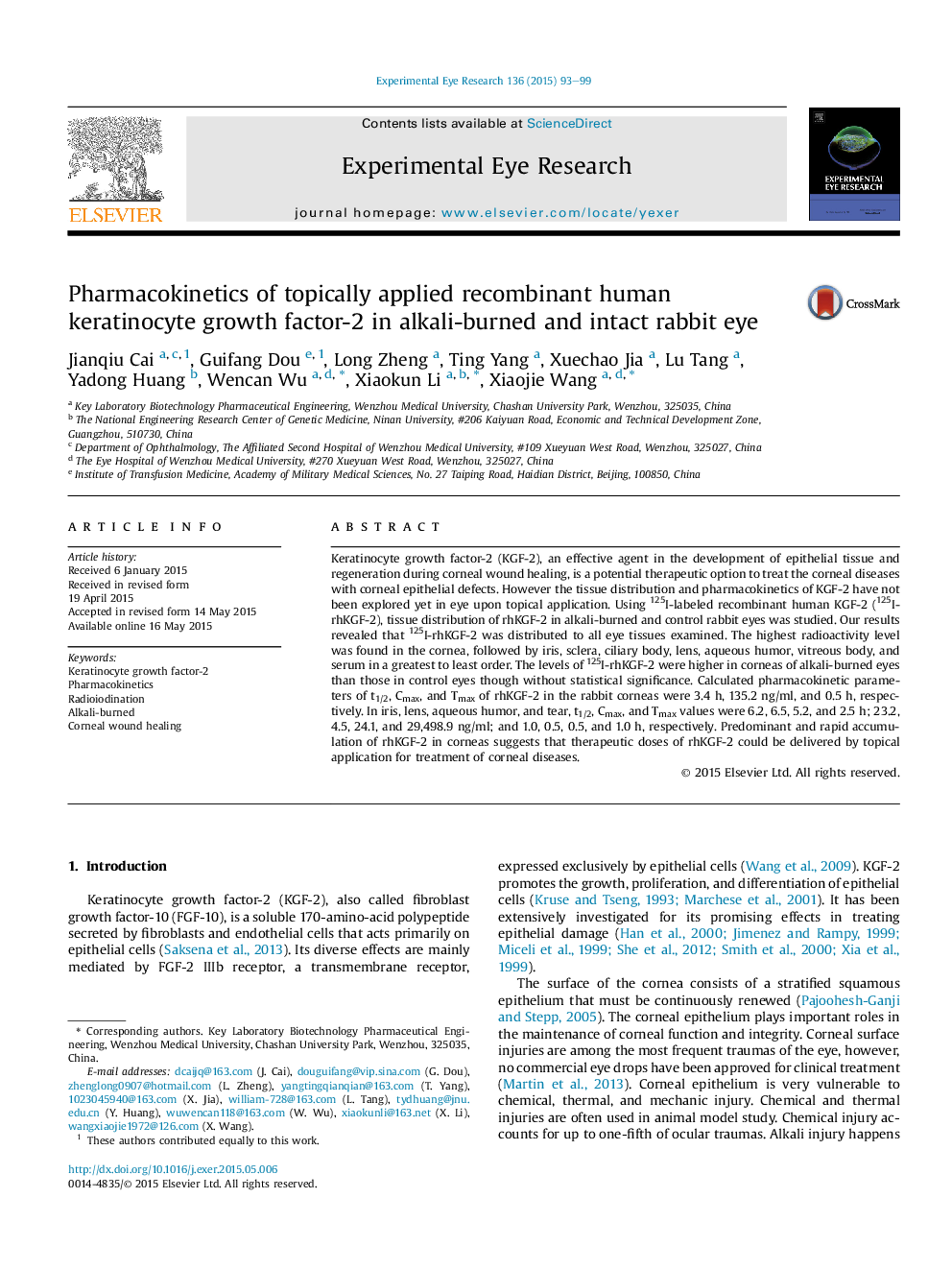| Article ID | Journal | Published Year | Pages | File Type |
|---|---|---|---|---|
| 4011152 | Experimental Eye Research | 2015 | 7 Pages |
•RhKGF-2 penetrated the cornea epithelium and distributed to all eye tissues examined.•The cornea was the primary target tissue of rhKGF-2 by topical application.•Predominant accumulation of rhKGF-2 in injured corneas could promote repair process.•There was little rhKGF-2 enters into the systemic circulation, which may be a safe factor.
Keratinocyte growth factor-2 (KGF-2), an effective agent in the development of epithelial tissue and regeneration during corneal wound healing, is a potential therapeutic option to treat the corneal diseases with corneal epithelial defects. However the tissue distribution and pharmacokinetics of KGF-2 have not been explored yet in eye upon topical application. Using 125I-labeled recombinant human KGF-2 (125I-rhKGF-2), tissue distribution of rhKGF-2 in alkali-burned and control rabbit eyes was studied. Our results revealed that 125I-rhKGF-2 was distributed to all eye tissues examined. The highest radioactivity level was found in the cornea, followed by iris, sclera, ciliary body, lens, aqueous humor, vitreous body, and serum in a greatest to least order. The levels of 125I-rhKGF-2 were higher in corneas of alkali-burned eyes than those in control eyes though without statistical significance. Calculated pharmacokinetic parameters of t1/2, Cmax, and Tmax of rhKGF-2 in the rabbit corneas were 3.4 h, 135.2 ng/ml, and 0.5 h, respectively. In iris, lens, aqueous humor, and tear, t1/2, Cmax, and Tmax values were 6.2, 6.5, 5.2, and 2.5 h; 23.2, 4.5, 24.1, and 29,498.9 ng/ml; and 1.0, 0.5, 0.5, and 1.0 h, respectively. Predominant and rapid accumulation of rhKGF-2 in corneas suggests that therapeutic doses of rhKGF-2 could be delivered by topical application for treatment of corneal diseases.
Graphical abstractFigure optionsDownload full-size imageDownload high-quality image (176 K)Download as PowerPoint slide
